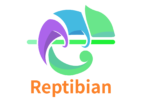Bearded dragons are fascinating reptiles that are popular as pets. They are omnivores, which means that they eat both plants and animals. While most of their diet consists of insects, it is important to provide them with a variety of plants as well. But what plants can bearded dragons eat?
There are many safe plants that bearded dragons can eat. In fact, providing them with a variety of plants can help keep them healthy and happy. Some good options include Tillandsia Ionantha, homegrown herbs like oregano and cilantro, Aloe Vera, and Callisia Repens. Bearded dragons can also eat succulents like the Jade Plant. However, it is important to avoid feeding them plants that are toxic or harmful to their health.
Knowing what plants are safe for bearded dragons to eat is important for their overall health and well-being. In this article, we will explore the different types of plants that bearded dragons can eat. We will also discuss the benefits of providing them with a varied diet and the potential risks of feeding them the wrong plants. Whether you are a new or experienced bearded dragon owner, this article will provide you with valuable information on how to keep your pet healthy and happy.
What Plants are Safe for Bearded Dragons?
Bearded dragons are omnivorous reptiles that require a balanced diet of both animal and plant matter. While there are many commercial diets available for these pets, including fresh vegetables and fruits in their diet is important for their health and well-being. However, not all plants are safe for bearded dragons to consume. In this section, we will discuss the different types of plants that are safe, artificial, and toxic for bearded dragons.
Live Plants
Live plants are a great way to add natural beauty to a bearded dragon’s enclosure and provide them with additional nutrition. Some of the safe live plants that bearded dragons can eat include:
- Oregano
- Basil
- Parsley
- Lemon Balm
- Hibiscus
- Nasturtium
- Prickly Pear Cacti
- Wheatgrass
It is important to note that live plants should be pesticide-free and free from any other harmful chemicals. Additionally, the plants should be washed thoroughly before feeding them to the bearded dragon.
Artificial Plants
Artificial plants are an excellent alternative to live plants, especially for those who do not have a green thumb or cannot provide the proper lighting and watering required for live plants. Some of the safe artificial plants for bearded dragons include:
- Plastic plants
- Silk plants
When choosing artificial plants, it is important to ensure that they are free from any toxic materials and are not sharp or have any small parts that can be ingested by the bearded dragon.
Toxic Plants
Some plants are toxic to bearded dragons and can cause serious health problems or even death. It is important to avoid these plants and remove them from the enclosure if they are present. Some of the toxic plants for bearded dragons include:
- Echeveria
- Bolivian Wandering Jew
- Blushing Bride
- Leatherleaf Sedge
- Spider Plant
It is important to note that this is not an exhaustive list of toxic plants, and owners should always research any new plants before adding them to the enclosure.
In conclusion, providing a variety of safe plants for bearded dragons is important for their health and well-being. Live plants and artificial plants can both be used, but it is important to ensure that they are free from any harmful chemicals or materials. Additionally, owners should always research any new plants before adding them to the enclosure to ensure they are safe for their pet.
What to Consider When Watering Plants for Bearded Dragons
When it comes to providing plants for bearded dragons to eat, it’s important to consider how they are watered. Here are some things to keep in mind:
Watering
Bearded dragons need a consistent supply of fresh water, and the same goes for their plants. When watering plants for your bearded dragon, make sure to use clean, chemical-free water. It’s also important to avoid over-watering, as this can cause root rot and other problems. A good rule of thumb is to water when the top inch of soil feels dry to the touch.
Humidity Levels
Bearded dragons require a specific level of humidity in their environment, so it’s important to choose plants that won’t disrupt this balance. Plants that require high levels of humidity may not be suitable for a bearded dragon’s enclosure, as they can increase the risk of respiratory infections. On the other hand, plants that require low levels of humidity may not thrive in the enclosure. It’s important to research each plant’s specific humidity needs before adding it to your bearded dragon’s habitat.
Fertilizers
Fertilizers can be harmful to bearded dragons, so it’s important to choose plants that are grown without the use of chemicals. Organic, pesticide-free plants are the best choice for bearded dragon enclosures. If you do choose to use fertilizers, make sure to use ones that are safe for reptiles and follow the manufacturer’s instructions carefully.
Special Considerations
Bearded dragons can eat a variety of plants, but it is important to ensure that they are safe and non-toxic.
When selecting plants for a bearded dragon enclosure, it is recommended to research and consult with a veterinarian or a reputable source to ensure that the plant is safe for consumption. Additionally, it is important to avoid using pesticides or fertilizers on plants that will be consumed by bearded dragons.
In addition to providing a source of nutrition, plants can also provide enrichment and stimulation for bearded dragons. However, it is important to monitor the bearded dragon’s diet and ensure that they are receiving a balanced and varied diet that includes both plants and protein sources.
